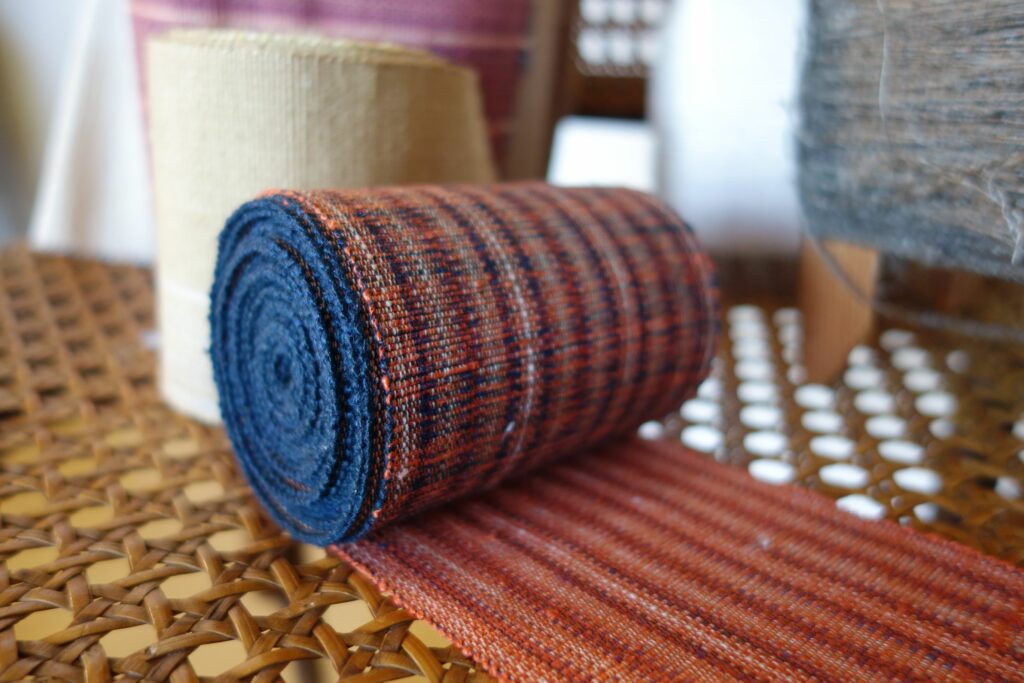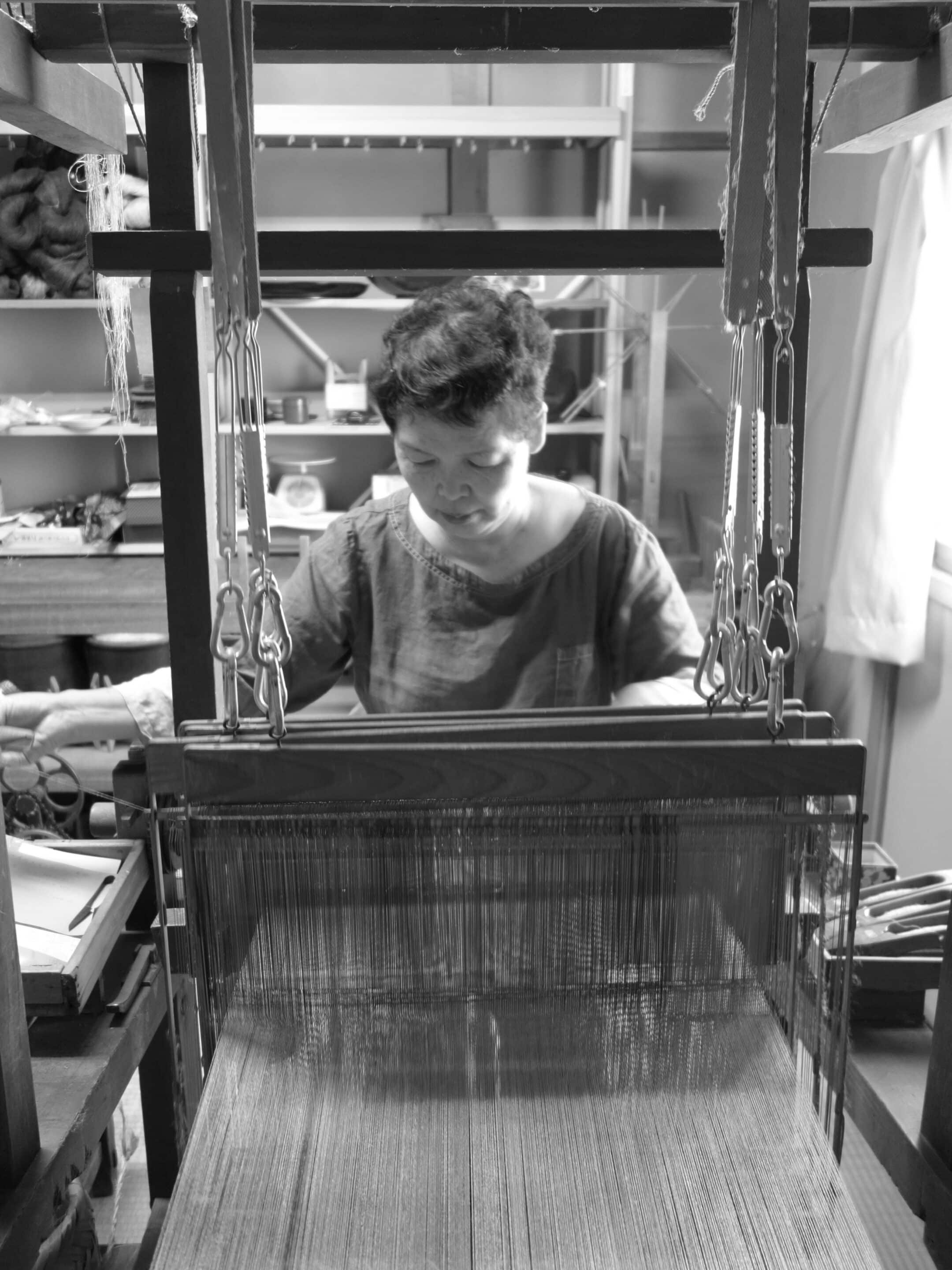Portraying Mingei Stories #2
It was “pricing.”
As I now write this story, I see and interpret the process of pricing as “claiming self-value.” How many of us are good at it?
Textile industry itself is one holistic ecosystem.
Start from growing mulberry trees, extracting silk filament out of the cocoons, to dyeing it with extracts from plants… the actual weaving comes at the very end of the long process categorised under “weaving.”
Yoshiko Munehiro, my mother, took on the process from dyeing onwards, and there were still dozens of procedures until she got to sit on her loom to start weaving, which was her favourite part.
“When I sit on the loom, there is a sense of ease and relief, knowing that 80 % of the entire job was done.”
She learnt weaving first from her father Rikizo Munehiro, later designated as the holder of intangible cultural property (Living National Treasure) then she was trained at a textile studio based in Matsumoto, Nagano until she became independent and moved to another city. Crafting was her expertise; selling requires a whole other set of skills. As an independent studio weaver, it had to be part of her job.
“ I tried to calculate my hourly wages, and it came down to 75 yen (about 50 cents)”
I remember her saying that jokingly. It might have been her usual self-deprecating joke. But it is obvious that if the minimum wage was applied to a piece of handicraft, many of them will easily be out of reach for many.
“ I know they are more expensive than anything we find in shopping malls these days. And I don’t want my work to be too expensive for anybody to afford. I’d like it to be… maybe not the cheapest they find, but something affordable if they want it”
So pricing was the toughest part of her work, as I find to be true for many independent craftsmen. It was about finding the happy balance between her sustainability and her customers’ affordability.
One day, she sold her kimono to Tatsue Kobayashi, a school teacher, avid collector, author, and the most influential figures in Nagano to spread the mingei messages. He wanted to buy her work and asked how much. After some time of hesitation, she said “$1700” awkwardly. Again, pricing was the toughest part of her work.
He paid her $2000.
He knew what went behind a piece of work.
I heard this episode from my mother a long long time ago.
Knowing there was somebody to tell my mother – in her twenties, just off her training onto her independence – that she was worth more than she claimed, gives me a peace of mind.


0 Comments